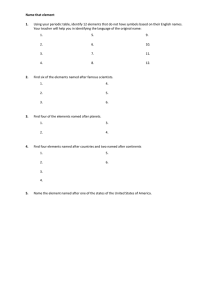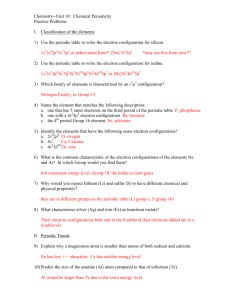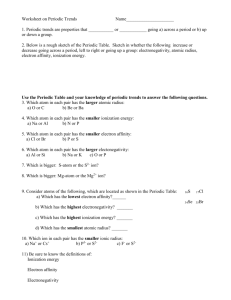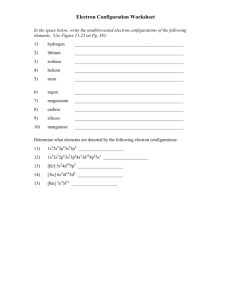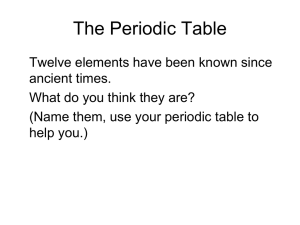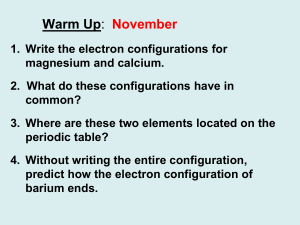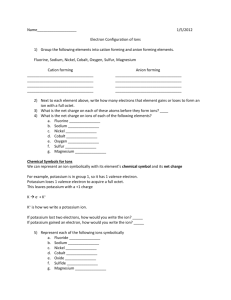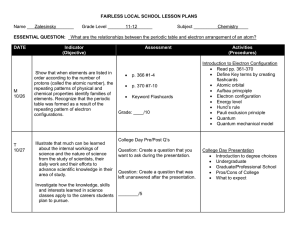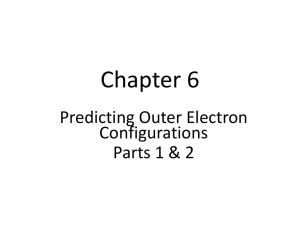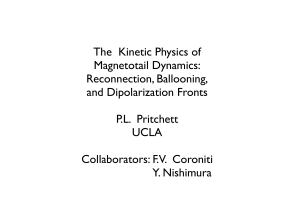Periodic Table Practice Problems: Chemistry Exercises
advertisement
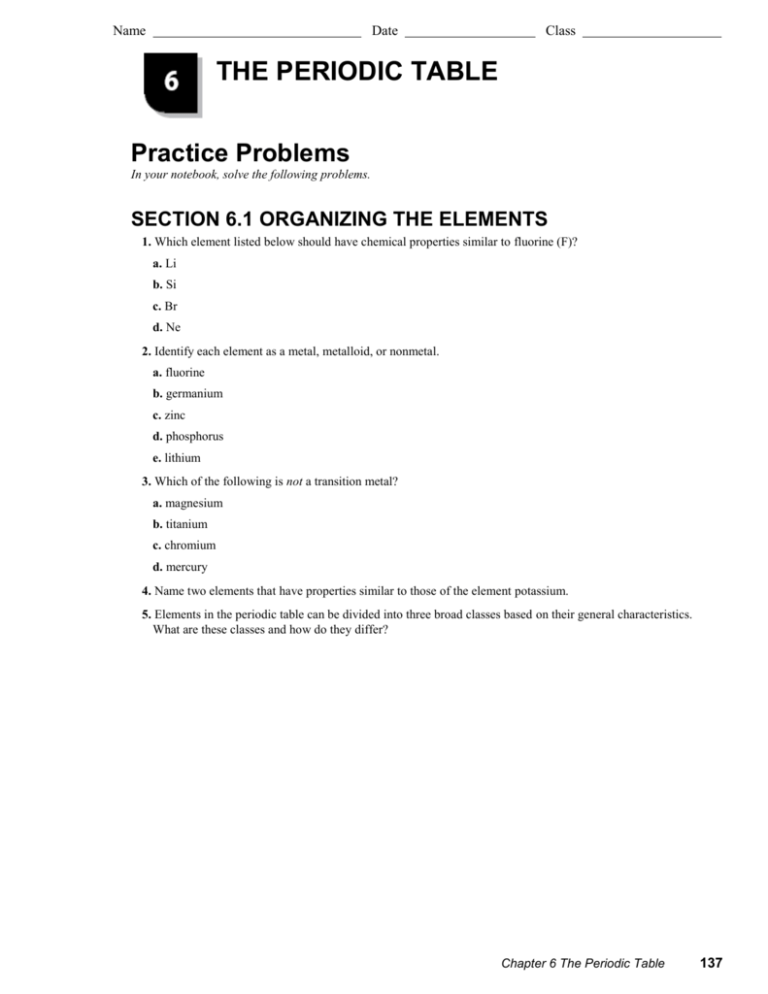
Name Date Class THE PERIODIC TABLE Practice Problems In your notebook, solve the following problems. SECTION 6.1 ORGANIZING THE ELEMENTS 1. Which element listed below should have chemical properties similar to fluorine (F)? a. Li b. Si c. Br d. Ne 2. Identify each element as a metal, metalloid, or nonmetal. a. fluorine b. germanium c. zinc d. phosphorus e. lithium 3. Which of the following is not a transition metal? a. magnesium b. titanium c. chromium d. mercury 4. Name two elements that have properties similar to those of the element potassium. 5. Elements in the periodic table can be divided into three broad classes based on their general characteristics. What are these classes and how do they differ? Chapter 6 The Periodic Table 137 Name Date Class SECTION 6.2 CLASSIFYING THE ELEMENTS 1. Use the periodic table to write the electron configuration for silicon. Explain your thinking. 2. Use the periodic table to write the electron configuration for iodine. Explain your thinking. 3. Which group of elements is characterized by an s2p3 configuration? 4. Name the element that matches the following description. a. one that has 5 electrons in the third energy level b. one with an electron configuration that ends in 4s24p5 c. the Group 6A element in period 4 5. Identify the elements that have electron configurations that end as follows. a. 2s22p4 b. 4s2 c. 3d104s2 6. What is the common characteristic of the electron configurations of the elements Ne and Ar? In which group would you find them? 7. Why would you expect lithium (Li) and sulfur (S) to have different chemical and physical properties? 8. What characterizes the electron configurations of transition metals such as silver (Ag) and iron (Fe)? SECTION 6.3 PERIODIC TRENDS 1. Explain why a magnesium atom is smaller than atoms of both sodium and calcium. 2. Predict the size of the astatine (At) atom compared to that of tellurium (Te). Explain your prediction. 3. Would you expect a Cl– ion to be larger or smaller than an Mg2+ ion? Explain. 4. Which effect on atomic size is more significant, an increase in nuclear charge across a period or an increase in occupied energy levels within a group? Explain. 5. Explain why the sulfide ion (S2–) is larger than the chloride ion (Cl–). 6. Compare the first ionization energy of sodium to that of potassium. 7. Compare the first ionization energy lithium to that of beryllium. 8. Is the electro negativity of barium larger or smaller than that of strontium? Explain. 9. What is the most likely ion for magnesium to form? Explain. 10. Arrange oxygen, fluorine, and sulfur in order of increasing electro negativity. 138 Core Teaching Resources
